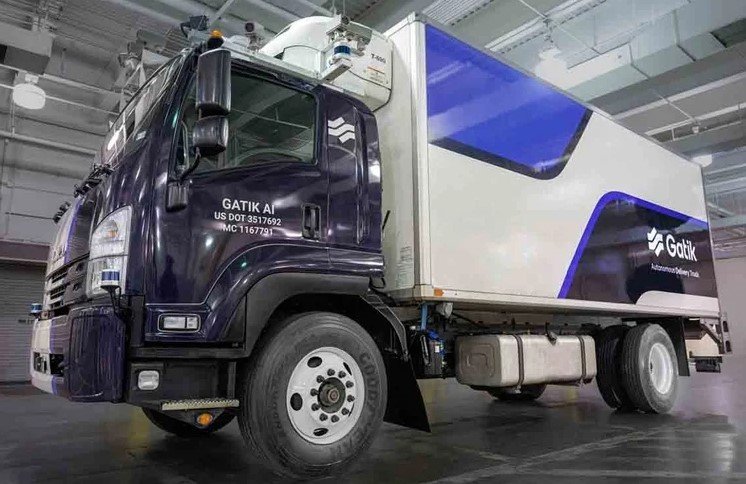Startup uses NVIDIA’s Cosmos to create millions of lifelike driving scenarios—without hitting the road
Gatik, the California-based autonomous trucking company specializing in middle-mile logistics, has just added a serious weapon to its testing toolkit. With the help of NVIDIA’s cutting-edge simulation tech, Gatik can now turn a simple 10-mile drive into millions of photorealistic, data-rich miles—all without leaving the lab.
The announcement, made Tuesday, reveals how Gatik’s next-gen Arena simulation platform is now powered by NVIDIA’s Cosmos World Foundation Models, a set of tools designed to make virtual testing feel eerily close to real-world driving. And it’s not just about pretty graphics. The implications for cost, safety, and speed of development are massive.
Turning 10 Miles into Millions
To explain how it all works, Gatik co-founder and chief engineer Apeksha Kumavat gave a real-world example. A truck runs 10 miles of data in Dallas. That data is fed into Arena. Before, that could generate around 100,000 synthetic miles—altered versions of the same basic route.
But now? With Cosmos integrated?
“We are now further able to completely change the location, the geography,” said Kumavat. “Those 10 miles from Dallas now can be recreated on a completely different section in Toronto or Phoenix. Different roads, weather, lighting—you name it.”
The result? Those 10 actual miles explode into millions of virtual miles, each one unique, and many that would be impossible—or unsafe—to recreate on public roads.
One-sentence punch: And they never had to start an engine.

Why This Is a Big Deal
Simulation has always been key to developing autonomous systems. But it’s typically limited by how many variations a developer can realistically model—and how believable those variations feel.
What Cosmos brings to the table is:
-
Ultra-high fidelity: The scenarios are visually and behaviorally true to life.
-
Geographic fluidity: One dataset can be dropped into any region or terrain.
-
Massive scalability: Millions of permutations can be generated in minutes.
Put simply, this is how you crash-test a truck without breaking anything.
Real-World Benefits from a Virtual World
For a company like Gatik, which specializes in middle-mile delivery—think warehouse-to-store, not long highway hauls or last-mile routes—being able to simulate common but high-risk scenarios is critical.
Take, for instance, an unexpected pedestrian at dusk during a thunderstorm. Or a school zone with erratic stop-and-go traffic. Testing such edge cases in real life is not just hard—it’s potentially dangerous.
That’s where Arena, powered by Cosmos, shines.
Gatik’s engineering team can throw its autonomous system into hundreds of such edge cases in a single afternoon, fine-tune responses, and never once worry about damaging a vehicle, injuring a pedestrian, or violating traffic laws.
And as Kumavat points out, it’s not just about speed. It’s about safer testing, better data, and smarter development.
The Simulation Arms Race
Gatik isn’t the only player investing in high-fidelity simulation. But the use of NVIDIA’s Cosmos puts it in a rarefied group of companies pushing simulation tech into new frontiers.
NVIDIA, which has long been a giant in graphics processing and AI computing, has been quietly turning its tools into simulation engines for everything from self-driving cars to robotics.
And with Cosmos, it’s raised the bar.
“Simulations built on Cosmos models don’t just mimic reality—they respond to it like reality,” said one NVIDIA engineer familiar with the project.
That’s not just marketing speak. It means objects in a scene—like puddles or reflective glass—change the behavior of the sensors and software just like they would in the real world.
And that kind of accuracy matters. Especially when you’re betting the safety of a truckload on it.
Who’s Gatik Again?
If you haven’t heard of Gatik, you’re not alone—but you’ve probably passed one of their trucks.
Founded in 2017, Gatik has carved a niche in what’s called autonomous middle-mile logistics. That’s the space between centralized distribution hubs and retail locations. Think of those short but vital delivery loops between a Walmart warehouse and a suburban store.
It’s not sexy. But it’s scalable.
Gatik already has commercial partnerships with Walmart and other big retailers in the U.S. and Canada. And while other autonomous vehicle companies have struggled with regulation, cost, or complexity, Gatik’s tight, predictable routes have made them a rare operational success story.
They don’t promise robo-taxis. They deliver paper towels.
And now, with NVIDIA in their corner, they’re doing it smarter.
A Quiet Leap Toward Safer Autonomy
Despite all the excitement around autonomous vehicles, real-world deployment has been slow. One reason? It’s tough—and risky—to test everything on actual roads.
But simulation has always offered hope. And now, with tools like Cosmos integrated into platforms like Arena, that hope feels a little more real.
For Gatik, this means better safety benchmarks, faster iterations, and lower costs. For the rest of us, it might mean more dependable self-driving trucks showing up at the backdoor of your local supermarket.
And they’ll have trained for that route millions of times—virtually.








